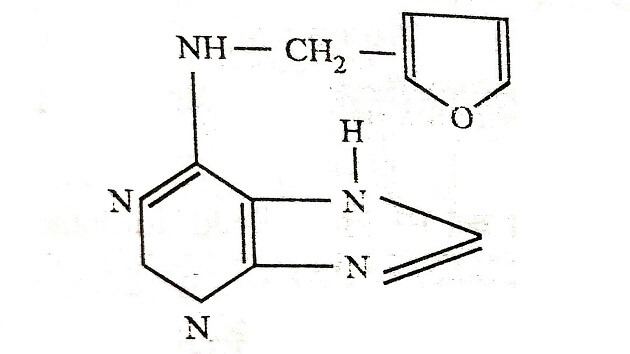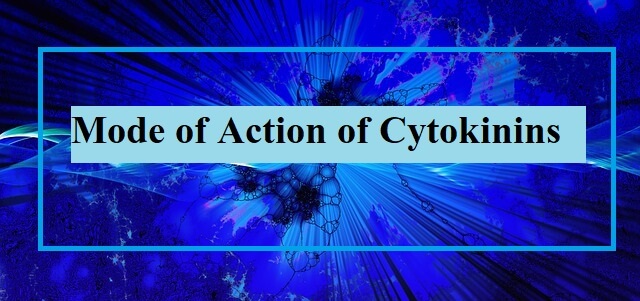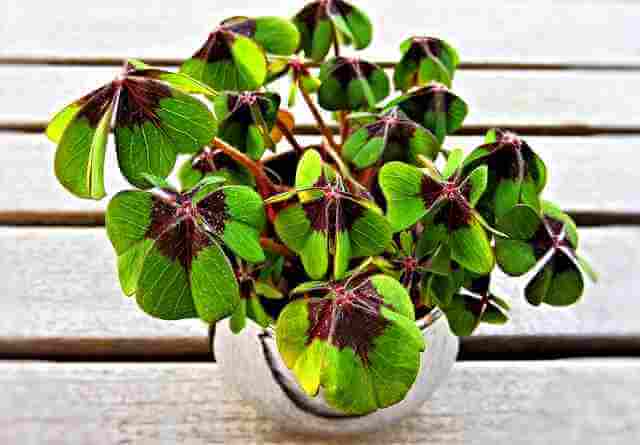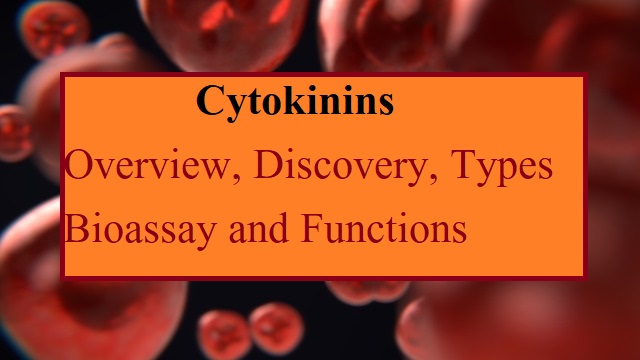Cytokinins are plant growth hormones which are basic in nature whereas auxins and gibberellins are acidic in nature. Cytokinins are either amino purine or phenyl urea derivatives that promote cell division in plants. Cytokinins promote cell division either alone or in conjugation with auxins. cytokinins are transported with the help of xylem.

Cytokinins are phytohormones which are primarily responsible for promoting cell division in roots and shoots of plants. They are Cytokinins promotes cell growth and differentiation. Cytokinins also affect apical dominance, axillary bud growth, and leaf senescence. In the 1940s, Folke Skoog discovered effects of Cytokinins using coconut milk at the Wisconsin–Madison University. Miller has discovered the first cytokinin was discovered from degraded autoclaved Herring sperm DNA in 1955.
Discovery of cytokinins
Miller, Skoog and Strong discovered the first cytokinin in 1955. They were working on callus tissue culture of Nicotiana tobaccum. It was a synthetic product formed by autoclaving Herring sperm DNA. This synthetic product was identified as 6 furfuryl amino purine. Later 6 furfuryl amino purine named as kinetin.
Burstran used term kinetinoid in 1961, Dendolph used term Phytokinin in 1963, Phytocytomine used by pilet in 1965, for kinetin like substance. But the term cytokinin coined by Lentham in 1964. Lentham discovered first natural cytokinin in unripe Maize grain in 1964. He called it Zeatin because it produced from Zea mays.
Types of Cytokinins
There are two types of cytokinins:
- Adenine-type Cytokinins- Kinetin, Zeatin, and 6-benzyl amino purine- synthesized in roots.
- Phenyl urea-type Cytokinins – Diphenylurea and Thidiazuron (TDZ) – have not been found in plants.
Bioassay of cytokinins
Bioassay of cytokinins is done through.
i) The retention of chlorophyll by leaf disc.
ii) The gain of weight of tissue in culture.
iii) Excised reddish cotyledon expansion.
iv) Root inhibition test.
Mode of Action of Cytokinins
Cytokinin alone has no effect on parenchyma cells of the plants. Cytokinins are effective with auxins in a proper ratio. In the callus cell differentiation is takes place by the action of auxins and cytokinins in a proper ratio. culture with auxin but no cytokinin, they grow large but do not divide in any way. When cytokinin is added in the callus, the cells of callus expand and start to differentiate.

Culture with auxin but no cytokinins grow large but do not divide in any way. When cytokinin is added in the callus, the cells of callus expand and start to differentiate. When cytokinin and auxin are present in equal levels, the parenchyma cells form an undifferentiated callus. More cytokinin induces growth of shoot buds whereas more quantity of auxin induces root formation.
Cytokinins play very important roles in plant processes such as cell division, shoot morphogenesis and root morphogenesis, regulation of axillary bud growth, apical dominance.
Cytokinins promote slow ageing of plant organs because it prevents protein breakdown. Cytokinins activate protein synthesis and assemble nutrients from nearby tissues. Cytokinins also regulated leaf senescence in tobacco leaves.
Functions of cytokinins

How is cytokinin transported and metabolized?
Cytokinins are plant hormones that passively transported from Roots to the shoot. Transpiration stream is the method of transportation of cytokinins. Cytokinins transported from Roots into the shoot with water and Minerals are taken up by the roots from the soil. xylem plays main role to transport water and Minerals from root into the shoot. Predominantly nucleotides are the cytokinins present in the xylem exudate. they reach the leaves and converted into free base or glucosides.

Glycosylation is the mechanism for inactivation of cytokinins, along with cytokinin oxidation. cytokinin oxidase enzyme converts zeatin into zeatin riboside and i6Ade to adenine or its derivatives. This enzyme inactivates the cytokinin hormone to prevent the accumulation of toxic levels of the hormone.
Read Also-
- Factors Affecting Plant Growth: External Factors And Internal Factors
- Plant Hormones: Growth Regulators – Promoters And Inhibitors In Details
- Plant Growth And Development: Phases, Curve, Measurement, Factors
- Parthenocarpy: Definition, Types, Hormones, Advantages And Disadvantages
- information about Soil Disease
FAQs About Cytokinins
What is the function of cytokinin?
Cytokinins play a very important role in cytokinesis, it promotes rapid Cell division. There is response occurs in callus when auxin and cytokinins are used alone. cytokinins promotes Cell enlargement and differentiation, Morphogenesis, controls Nucleic acid metabolism. cytokinins stimulate the activity of photosynthetic enzymes.
Where are cytokinins produced?
Cytokinins are produced in the apical meristems
Who discovered cytokinins?
Miller, Skoog and Strong discovered the first cytokinin in 1955
What is the precursor of cytokinin?
The precursor of cytokinin is AMP (adenosine monophosphate)
Here we have discussed “Cytokinins: Overview, Discovery, Types, Bioassay and Functions” we hope you like this article. if you have any query or suggestion, please leave a comment on the email. or contact us from contact us page.
Follow our official groups on Telegram, Whatsapp and Facebook

